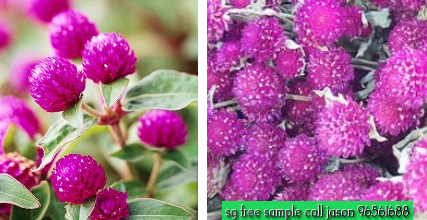Red Globe Amaranth 千日紅 Qian Ri Hong Gomphrena Globosa
Gomphrena Globosa, aka Red Globe Amaranth Flower, literally translates to Qian Ri Hong 千日紅 Thousand Days Red due to its everlasting flower blooming period.
Other Chinese names include Qian Ri Hong and Wan Nian Hong.
Globe amaranth is a short annual with dense, clover like flower clusters that often are dried and preserved. The flowers lack petals but exhibit red, pink, orange, or white bracts on long stalks.Globe Amaranth originally grows in the tropics. It is a sun plant. It is resistant to dryHeat but not to cold.
The shape of the flowers is even and complete and the colour purplish red. It also has a faint smell of pure fragrance.
Globe Amaranth Tea is known to prevent aging thus it is good for the skin. Best taken without mixing other tea except some Stevia leaves for sweetening purposes.
This tea contains essential vitamins and minerals and is known in Chinese medicine for helping to relieve cough, shortness of breath, enhance vision, prevent aging thus it is good for the skin.





